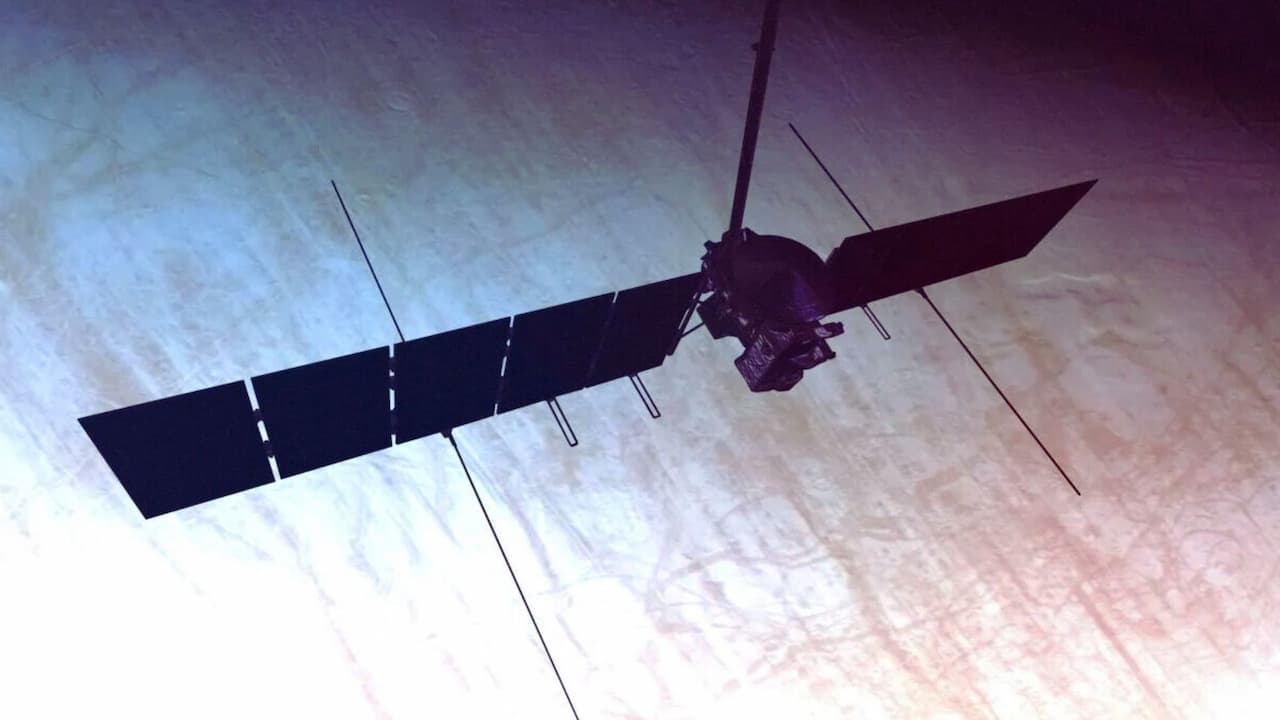NASA’s Wild Ride: Spacecraft Set to Dance with Jupiter’s Ocean Moon
In a bold move that sounds like science fiction, NASA is gearing up for an epic space adventure. The star of the show? The Europa Clipper spacecraft is ready to embark on a journey that will take it to one of the most intriguing places in our solar system.
A Moon with More Than Meets the Eye
Europa, one of Jupiter’s many moons, isn’t just another chunk of space rock. Scientists believe it’s hiding a secret beneath its icy surface – an ocean that could contain twice as much water as all of Earth’s seas combined. This isn’t just cool; it’s groundbreaking. Why? Because where there’s water, there might be life.
A NASA planetary geologist, Cynthia Phillips, says, “It’s perhaps one of the best places beyond Earth to look for life in our solar system.” That’s a big deal, folks.
The Journey Begins… Almost
The Europa Clipper was all set for takeoff when Mother Nature decided to throw a curveball. Hurricane Milton crashed the party, forcing NASA to hit the pause button. But don’t worry; the 1.8-billion-mile trip is still on the cards.
What’s the Plan?
Once it gets going, the Europa Clipper isn’t just going to fly by and wave hello. NASA has big plans for this little spacecraft:
- It’ll zoom past Europa nearly 50 times, getting up close and personal with its cracked, icy shell.
- High-tech cameras will snap detailed pictures.
- A unique radar will peek under the ice.
- Get this – it’ll even catch tiny bits of Europa that small meteorites have kicked into space!
All this gadgetry has one main job: figure out if Europa could host life.
A Cosmic Dance
Now, here’s where things get wild. The Europa Clipper needs to pull off some seriously fancy moves to make all these flybys work. NASA released a video showing how it’ll loop around Jupiter to meet up with Europa at the correct times.
Picture this:
- Jupiter’s the big orange dot in the middle.
- Europa’s the blue dot.
- The other dots? Those are Jupiter’s other big moons.
- And that magenta line zipping around? That’s our Europa Clipper, doing what NASA calls “lopping in and out.”
It looks like a cosmic dance, and in a way, it is. Every move is carefully planned to get the most science done while keeping the spacecraft safe.
Dodging Space Bullets
Regarding safety, radiation is a big reason for all this fancy flying. Jupiter is not just a giant; it’s a radiation powerhouse. Its magnetic field is massive, stretching millions of miles into space. It grabs particles from the sun and turns them into a dangerous radiation belt around the planet.
How bad is it? Well, if a person tried to fly by Jupiter like the old Voyager spacecraft did, they’d get hit with 1,000 times the lethal dose of radiation. Yikes!
That’s why the Europa Clipper plays a high-stakes game of “tag” with Europa. It swoops in for less than a day, does its thing, then gets out of there for a few weeks. “You get out of there,” as Phillips puts it.
The Long Game
This cosmic ballet isn’t happening next week. The Europa Clipper is set to reach Jupiter in 2030, and that’s when the real show begins. NASA’s already dreaming bigger if it finds signs that Europa could support life. The next step? Landing a robot on that icy surface to drill down and see what’s happening under there.
What It All Means
This mission is more than just cool space stuff. It’s about answering one of our biggest questions: Are we alone in the universe? Europa Clipper could be the key to unlocking that mystery.
As we watch this mission unfold over the coming years, remember that every image and every bit of data brings us closer to understanding our place in the cosmos. It’s not just science; it’s an adventure that belongs to all of us.
Stay tuned, space fans. The Europa Clipper is about to take us on one wild ride.
Table of Contents
